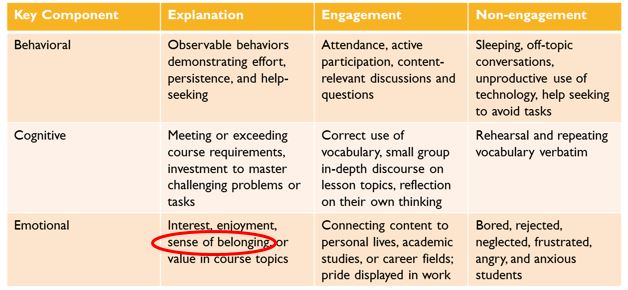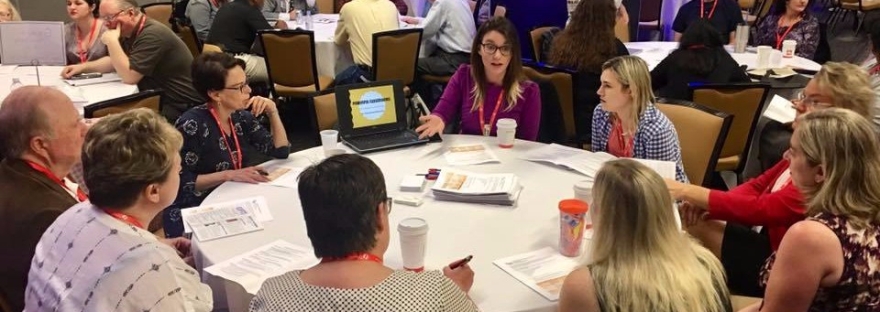Hi again! Since the fall semester is getting closer I thought I would write about the importance of building community in the classroom through digital storytelling.
When I walk into a classroom for the first time I always tell a quick story of how I got to where I am today. I want my students to emotionally engage with the classroom.
Let’s look at some research from Linnenbrink and Pintrich on Classroom Student Engagement.

(Linnenbrink & Pintrich, 2003)
We can see that when a student is emotionally engaged they feel like they belong in the classroom because content connects to their personal lives or academic studies which results in pride displayed in work.
Adobe Spark has come out with a new tool that easily allows you to create a digital story. Next semester I am planning on asking all of my students to make a 1.5-3 minute digital story of their life to create that sense of belonging and community in the classroom.
Check out my digital story below.
https://spark.adobe.com/video/FNoHPvnmSbBqI/embed






 The words themselves have a strong influence over your ability to say the color. The interference between the different information (what the words say and the color of the words) your brain receives causes a problem. There are two theories that may explain the Stroop effect:
The words themselves have a strong influence over your ability to say the color. The interference between the different information (what the words say and the color of the words) your brain receives causes a problem. There are two theories that may explain the Stroop effect:
 When you get stressed, whether it’s anxiety, depression, worry, one of the things you notice is that your attention begins to fade away, your attention gets hijacked by other things. You want to focus on one thing but your concentration goes.
When you get stressed, whether it’s anxiety, depression, worry, one of the things you notice is that your attention begins to fade away, your attention gets hijacked by other things. You want to focus on one thing but your concentration goes.